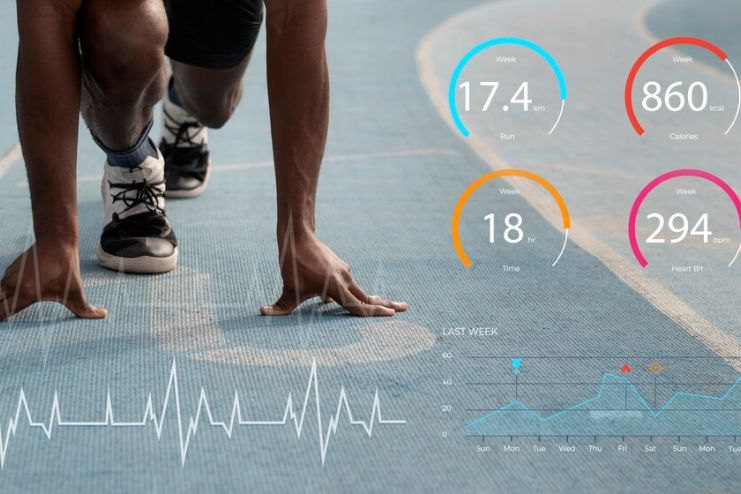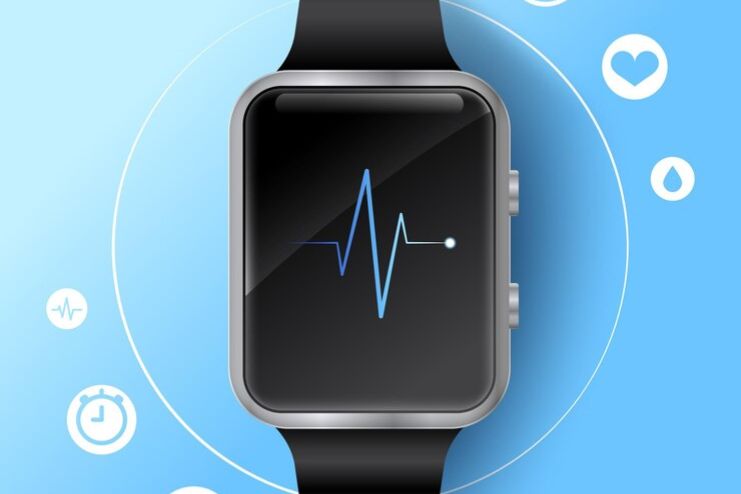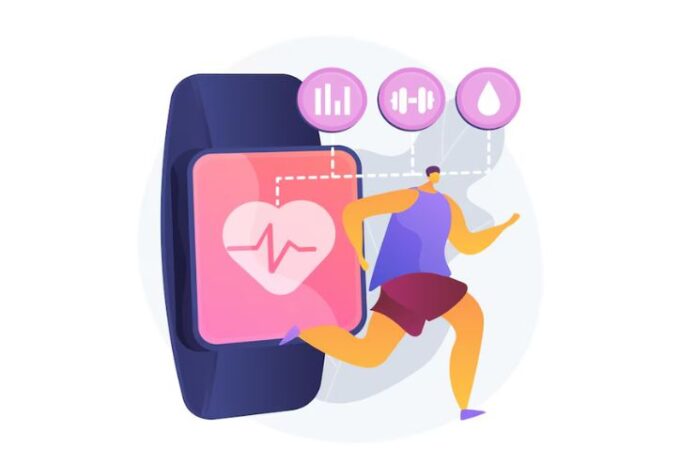Affiliate Disclaimer
Some links in this article are affiliate links. We may earn a small commission if you make a purchase through these links, at no extra cost to you. We only recommend products we find useful to our readersHave you ever wondered about heart rate zones and how they can improve your workouts? The five heart rate zones each represent different intensity levels, with advantages ranging from endurance and fat burning to optimal performance.
Utilizing heart rate zones during workouts allows you to personalize your workouts for specific goals such as weight loss, endurance, or speed enhancement.
This article describes what heart rate zones are, how they can enhance effectiveness during workout sessions, and the tools you can use to track your progress.
Benefits of Training with Heart Rate Zones
There are numerous advantages of training according to your five heart rate zones:
- Customized Exercises: You can design exercises personalized to your fitness goals by utilizing your heart rate data.
- Improved Intensity Control: Maintaining the right amount of effort during your workouts will be easier when you track your training zones.
- Stronger Heart: Training frequently in these zones improves the efficiency of your heart’s pumping action, which benefits your heart health and endurance.
- Greater Fitness Levels: Increasing your VO2 max (maximum amount of oxygen your body can use) through training will help your body use oxygen more efficiently when exercising, resulting in better endurance.
- Better Athletic Performance: By concentrating on particular heart rate zones, athletes can improve their strength, speed, and performance in their sport.
- Works for Everyone: Training zones help you monitor your progress and modify your workouts to fit your needs, regardless of your fitness levels.
What Are Heart Rate Zones?

Heart rate zones are intensity levels, determined by your heart rate, that can help you achieve specific exercise goals. They’re defined as percentages of your HR max, or your fastest heartbeat possible while engaged in strenuous exercise. Because each heart rate zone corresponds to a certain amount of exertion, you can plan your workouts toward specific objectives, such as speed, endurance, or fat loss.
You can use a formula to determine your general HR max: 220 minus your age. For a more accurate result, a lab stress test or an all-out field test conducted in a safe environment is recommended.
After finding your maximum heart rate, you can divide it into five primary zones, each of which will give you a different kind of advantage.
- Zone 1 (50–60% of HR max): A light intensity for warm-ups or recovery.
- Zone 2 (60–70% of HR max): The fat-burning zone, ideal for longer cardio sessions.
- Zone 3 (70–80% of HR max): Builds aerobic endurance and boosts cardiovascular health.
- Zone 4 (80–90% of HR max): A high-intensity zone that enhances speed and strength.
- Zone 5 (90–100% of HR max): Maximal effort, suitable for short, explosive bursts.
You can track your heart rate zones for progress, work out at optimal intensities, and improve your fitness results.
Heart Rate Zones and Fitness Goals
Understand the five different heart rate zones if you want to use zone training in your workouts. Understanding how to align your heart rate training with specific fitness goals is essential for optimizing results from the training. Here’s a breakdown of how different heart rate zones can match various fitness objectives:
Zone 1: Extremely Low
- Percentage of Max Heart Rate: 50–60%
- Fitness Goal: Frequently utilized for warm-ups and cool-downs, it promotes blood flow and facilitates recuperation.
- How It Feels: This zone is relaxed and comfortable. You won’t be out of breath while talking during your workout.
- Fuel Source: This zone uses fat as fuel for light, low-intensity daily activity.
- Examples: Walking at a normal pace, light yoga or stretching, gentle cycling, and casual swimming.
Zone 2: Ligh
- Percentage of Max Heart Rate: 60-70%
- Fitness Goal: Excellent for longer sessions to increase stamina. It is the best zone to burn fat as the body uses fat as its primary fuel source. It promotes weight management and improves fat metabolism.
- How It Feels: You’ll feel a little more challenged, but you can stay at this level for a while, and with a little effort, you can converse.
- Fuel Source: Although it still mostly burns fat, this zone also improves oxygen delivery to your muscles and reduces insulin resistance.
- Examples: Brisk walking, Slow to moderate jogging, cycling at a moderate pace, and Zumba. This zone is for longer sessions and more than 30-minute periods of moderate-intensity exercise.
Zone 3: Moderate
- Percentage of Max Heart Rate: 70–80%
- Fitness Goal: Perfect for increasing strength and cardio fitness. Spending time in zone 3 improves endurance and aerobic capacity, and the body develops a capillary network that improves oxygen delivery to muscles. Athletes usually find their race pace when they train at this intensity.
- How It Feels: Speaking gets challenging at this notably faster tempo.
- Fuel Source: This zone is performance-focused when your body switches to burning carbohydrates, fats, and protein for energy.
- Examples: Running or jogging at a steady pace, moderate cycling, aerobic classes, swimming laps at a moderate pace. Opt for this type of training for longer endurance sports, such as triathlons or marathons.
Zone 4: Hard
- Percentage of Max Heart Rate: 80–90%
- Fitness Goal: The goal of this zone is to increase speed and VO2 max (the highest amount of oxygen your body can use) during brief, severe exertions. Zone 4 is for hard interval training. It is ideal for enhancing performance and raising VO2 max as it is used for brief, strong bursts of activity. Muscle economy and speed are improved by training in this zone.
- How It Feels: Talking will be almost impossible as you feel like you’re straining yourself.
- Fuel Source: Carbohydrates and protein. Long after your workout is over, you still burn calories.
- Fitness Goal: Examples: High-Intensity Interval Training (HIIT), sprints, speed cycling, uphill cycling, circuit training.
Zone 5: Maximum
- Percentage of Max Heart Rate: 90–100%
- Fitness Goal: It increases your maximum power and speed, making it perfect for athletes who want to perform better. Zone 5 is for sprints and maximal-intensity exercises. This is also ideal for enhancing performance and raising VO2 max. Like Zone 4, Zone 5 also involves brief, intense bursts of activity.
- How It Feels: You can only sustain this level of effort for a brief period.
- Fuel Source: Your body pushes the boundaries of anaerobic energy, using Carbohydrates and protein.
- Fitness Goal: Examples: All-out sprints, plyometrics, maximal strength training, tabata training.
Tools for Heart Rate Monitoring

Most people use a heart rate monitor to track their zones. They are wearable and use smartwatches or fitness trackers with high-end sensors to measure readings in real time. These are great for personal use but cannot replace medically approved gadgets.
How They Work:
Heart rate monitors typically operate using two methods:
- Electrical detection
- Optical detection
Types of Devices:
- Chest-band monitors
- Wrist or forearm wearables
- Smart rings
- Pulse oximeters
- Smartphone apps
Usage Considerations:
Though generally safe, heart rate monitors should not replace professional medical equipment for serious health monitoring. It’s important to be aware of allergies to the materials used in these products. Knowing this can help you make informed choices and ensure your safety. You should discuss heart rate monitors with a healthcare professional to get accurate results and get personalized advice on how to use them.
Tips for Beginners in Heart Rate Monitoring
- Choose the right device
- Learn how to use It
- Establish a baseline
- Track your activity
- Monitor your intensity
- Stay consistent
- Don’t rely solely on numbers
- Set realistic goals
- Stay hydrated and rested
- Get regular check-ups
Conclusion
Heart rate monitoring is a valuable tool for individuals looking to enhance their fitness and overall health. By understanding how these devices work and how to use them effectively, beginners can track their heart rates during various activities, allowing them to adjust their workouts and monitor their progress.
While heart rate monitors offer significant insights into your cardiovascular health, they should complement, not replace, regular medical consultations. As you embark on your heart rate monitoring journey, remember to set realistic goals, stay consistent, and listen to your body.
With these practices, you can use heart rate data to make informed decisions about your health and fitness, leading to a more active and healthier lifestyle.
References
- https://www.rei.com/learn/expert-advice/how-to-train-with-a-heart-rate-monitor.html
- https://vo2master.com/blog/training-zones
- https://www.sciencetraining.io/2022/how-heart-rate-zones-work-in-endurance-training
- https://www.wellandgood.com/heart-rate-zones-hiit
- https://www.healthline.com/health/fitness-exercise/fat-burning-heart-rate
- https://my.clevelandclinic.org/health/diagnostics/23429-heart-rate-monitor
In this Article



















